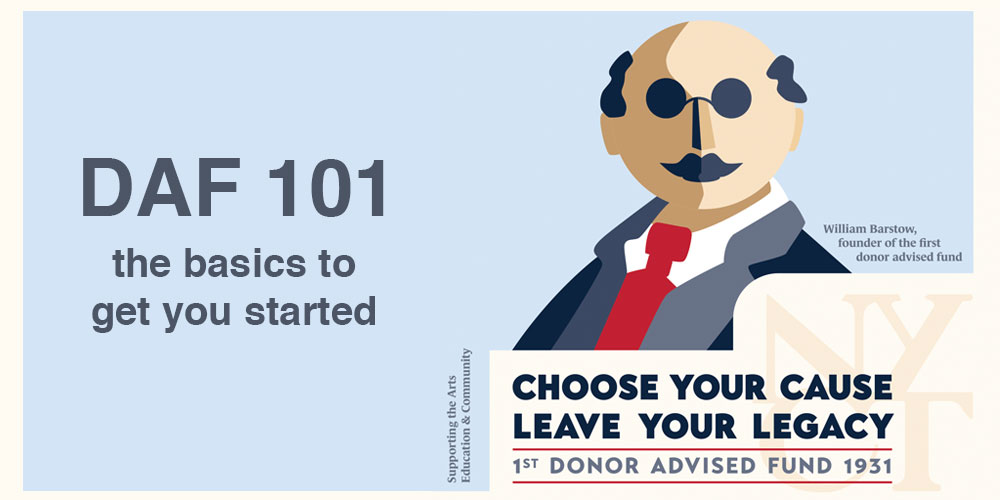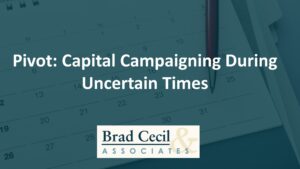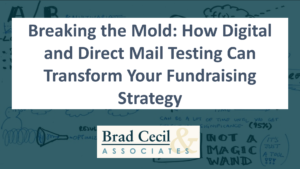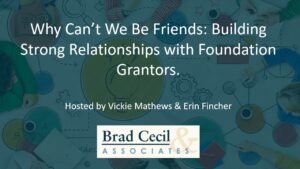As communities across the country face historic crises related to the effects of COVID-19, the more than $120 billion sitting in Donor-Advised Funds, also known as DAFs, has been a topic of much debate. Even on my own team of major gift consultants, we disagree on the merits of DAFs in their current state. And, y’all, it gets heated. But I digress…
We are seeing philanthropists from coast to coast respond in kind, making transformative gifts and embracing innovative solutions to get charitable relief to those who need it most. However, the question remains: Will this FINALLY be the moment to unlock this large charitable savings account, the DAF?
Whether we agree or disagree on DAFs, our team is excited to see innovative solutions being used to inspire fund holders, like the #HalfMyDAF challenge. Issued by Jennifer and David Risher, this creative challenge encourages donors to direct at least half of their DAF funds to nonprofits this year. You can read more about this initiative here.
And so, with all this chatter about DAFs right now, we are taking a deep dive into the complexities of this largely unregulated giving vehicle. Join me over the next two weeks as I share the basics of DAFs, best practices for stewarding them and some real-world examples that might help you to more fully engage with these donors.
Ready? Let’s dive into the basics:
What are a Donor-Advised Funds (DAFs)?
Donor-Advised Funds can most simply be thought of as a charitable savings account. When funds are placed into a DAF, the donor receives an immediate tax benefit in exchange for a commitment to use the funds solely for charitable purposes.
The first DAF was established in 1931, funded by William and Francoise Barstow. The Barstows sought a way to efficiently make charitable contributions without the obstacles of a private foundation. And they found that flexibility with the help of the New York Community Trust. DAFs began to grow in popularity in the early 1990s when Fidelity Charitable began offering the service to its clients. Since then, they have become philanthropy’s fastest growing type of charitable spending. In a mere six years, DAFs have almost tripled in value from $45 billion in 2012 to more than $120 billion in 2018. No matter which side of the argument you fall on, you cannot ignore the transformative potential DAFs hold!
Who are the donors?
DAFs are appealing for a number of reasons, but here are three main types of donors who find DAFs most attractive:
-
A donor who experiences a windfall of income would be attracted to a DAF in order to take advantage of the immediate tax deduction. DAFs give them the freedom to make decisions on their charitable giving later by holding their funds in a “parking lot” until they are ready to direct them to a nonprofit.
-
A DAF is an excellent alternative for a donor who has a significant amount to direct towards charitable purposes but does not want to invest the time and expense into establishing a private foundation, much like our friends William and Francoise Barstow.
-
A donor who is new to philanthropy may be attracted to a DAF for guidance. These donors seek the insights of a team of professional advisors who are intimately aware of what is going on in the community and can help identify priorities and conduct research to ensure that their gift does exactly what they want it to do with a reputable nonprofit.
As I mentioned earlier, DAFs are appealing for many reasons and to many different types of donors. However, the examples listed above are only a snapshot of the top reasons DAFs are attractive to donors. The low entry point (funds can be established with as little as $5,000) and ease of accessibility through professional advisors has fueled tremendous growth in the sheer number of DAFs that are opened – to the tune of an increase of more than 50% year-over-year as reported by the National Philanthropic Trust’s 2019 DAF Report. DAFs are gaining popularity and are here to stay!
Where are Donor-Advised Funds held?
DAFs are held at major financial institutions, including “the big three” Fidelity, Schwab and Vanguard Charitable. Local wealth advisors are also beginning to offer DAF services and philanthropic counsel to their clients. This option is attractive for those donors who want to have all of their accounts in one place.
DAFs are also held at local community foundations, which is a more traditional repository for charitable funds. Community foundations can be local, such as the Silicon Valley Community Foundation, or national, such as the National Philanthropic Trust. Currently, 780 community foundations serve communities in every state in the U.S. To find a community foundation near you, check out this Community Foundation Locator provided by the Council on Foundations.
How much do Donor-Advised Funds give?
Unlike private foundations which are required to make grants totaling at least 5% of their assets each year, DAFs have no annual giving requirement. Most community foundations, however, will tell you that their DAF granting is closer to 20% of the total value of assets each year. Keep in mind that this number is an average across all funds, so some funds grant out a much larger portion while others may not make any gifts in a given year.
We’re starting to learn more about how DAFs have responded to the COVID-19 pandemic. Most philanthropic advisors are reporting an approximately 36% increase in the number of grants and the dollar amount of those grants increasing by as much as 120% in the month of March alone. Fidelity Charitable’s recent “Communities in Crisis” report give us some initial insights into the DAF grants their donors have been making to respond to the pandemic. The general consensus is that DAF disbursements will exceed the 20% threshold observed in previous years, but we will have to wait to see just how much it goes up.
What’s next?
If you have read the Giving USA report that was recently released, you’ll know that nonprofits across the country are beginning to see a trend in the use of alternative giving vehicles (which includes DAFs) for the top 3% of individual donors.
I encourage you to pay attention to your donors who choose to support your organization through their DAF and make DAFs a regular part of your conversation with all donors. Check out Brad Cecil’s tips to increase contributions from DAFs!
Next week, I’ll be sharing some best practices for identifying and stewarding DAF donors as well as their philanthropic advisors. So check back then or email me if you have questions. I would love to help you!
The header image was illustrated by Midori Eng. All images are the original designs of Brad Cecil & Associates ©2020





